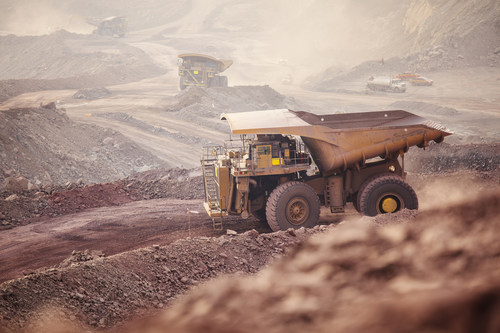Brigade Electronics explains why vehicle safety in construction is still a cause for concern
OSHA states that approximately 75% of struck-by fatalities involve heavy equipment such as trucks or cranes
Safety on construction sites has improved greatly over the past fifty years. However, the latest report by OSHA (Occupational Safety and Health Administration) shows that construction tops the most dangerous occupations in the US for fatal injuries.
One of the main causes of fatal incidents for workers is being struck by a moving vehicle. In fact, OSHA states that approximately 75% of struck-by fatalities involve heavy equipment such as trucks or cranes.
Laws for occupational safety, enforced and regulated by OSHA, provide comprehensive information on the standards that should be put in place by companies operating in the construction industry – those found guilty of breaching these rules face hefty fines.
In 2021, Atlantic Coast Utilities LLC/Advanced Utilities Inc. was cited for 28 violations of the regulations and ordered to pay more than $1.3 million in fines after two employees were struck and killed by a dumper truck.
In a statement, OSHA said the violations included “the company’s refusal to train the two fatally injured employees and other workers to recognize and avoid work-related hazards” and that the company also “failed to conduct worksite inspections to identify and correct hazards, including the risks of being struck by construction vehicles.”
Clearly, vehicle safety should always be taken seriously. But regulations can also be open to interpretation. Certainly, there are question marks over the duties and responsibilities of companies, operators and individuals when it comes to ensuring hazards posed by vehicles on worksites are prevented.
Large construction vehicles are notorious for having complex and numerous blind spots and visibility has long been an issue for drivers and workers on the ground.
The OSHA Regulations state that no contractor or subcontractor for any part of the contract work shall require any laborer or mechanic employed in the performance of the contract to work in surroundings or under working conditions which are unsanitary, hazardous, or dangerous to his health or safety.
The rules relating to material handling equipment also require that scrapers, loaders, crawler or wheel tractors, bulldozers, off-highway trucks, graders, agricultural and industrial tractors, and similar equipment should be fitted with audible alarms. But what does this mean?
While the regulations don’t indicate precisely what the best type of alarm is or how this should be applied, it is clear that operators and their drivers have a legal obligation to ensure people are not endangered by vehicles under their control. In the event of an incident, an operator or driver could be prosecuted and face hefty fines if they were found to be in breach of these rules. So how can operators and drivers ensure they do not violate these rules?
Corey Heniser is a vehicle safety expert and CEO of Brigade Electronics INC, a leading supplier of safety devices and solutions for construction vehicles. He said:
“Construction sites can be extremely challenging and unpredictable environments. Therefore, maintaining safety at all times can be very difficult. On construction sites, the need for safety is paramount, particularly as the slightest mistake can have devastating consequences.
“A variety of technologies are helping to address the problem of restricted visibility and blind spots on vehicles operating in construction sites. One of these includes the very latest RFID (Radio Frequency Identification) technology, such as Brigade’s ZoneSafe proximity warning system, which will be launched in the US later this month.”
Ideal for construction sites, ZoneSafe uses vehicle-mounted antennas that communicate with detection tags, which can be worn by workers or placed on objects or property. When a tag enters a detection zone, the vehicle operator will automatically receive a visual and audible alert via the in-cab control unit, which will enable them to take the necessary action. Tags worn by workers on foot will also vibrate to warn of an approaching vehicle.
Since ZoneSafe uses RFID technology, the tags will be detected regardless of obstructions, blind spots, adverse weather conditions or poor visibility. Each tag can be uniquely identified and linked to individuals or objects and does not require a line-of-sight to alert the operator of potential obstruction.
Corey continued:
“This technology is ideal for all types of construction vehicles that frequently operate within close proximity of workers and other machines. The system provides fast, reliable and accurate data exchange without any limitation on the number of tags or antennas in operation, making it perfect for large areas like busy construction sites.”
As the industry prepares for the American Public Works Association (APWA) Public Works Expo: PWX 2022 in August, safety remains top of the agenda.
Corey added:
“The training of drivers is key to ensuring safety standards are adhered to. However, vehicle safety technology can add an additional layer of security and peace of mind for operators who strive to keep their workplaces hazard free.”
Category: Cab, Trailer & Body, Connected Fleet News, Driver Stuff, Equipment, Featured, Fleet Tracking, General Update, News, Products, Safety, Tech Talk, Tools











